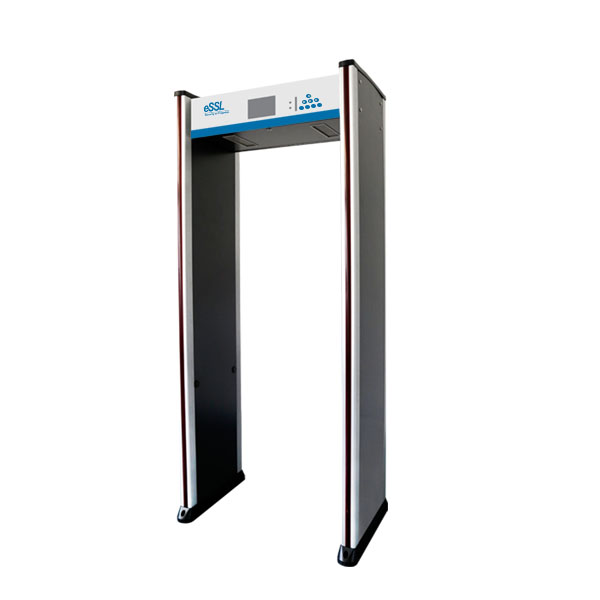A Metal detector gate is a security device that is designed to detect the presence of metal objects on a person passing through it. It is commonly used in airports, government buildings, and other public places as a security measure to prevent the entry of weapons, explosives, or other metal objects that could pose a threat to public safety. In this essay, we will discuss the functionality of metal detector gates, their advantages and disadvantages, and their impact on public safety.

| Features | |
|---|---|
| Power Supply | AC85 V – 264 V |
| Working Temperature | -20OC to +50OC |
| Working Frequency | 4KHZ—8KHZ |
| Standard External size | 2230mm(H)x830mm(W)x730mm(Deep) |
| Standard Internal size | 2000mm(H)x700mm(W)x605mm(Deep) |
Metal detector gates operate on the principle of electromagnetic induction. When a person passes through the gate, the metal detector emits a low-frequency electromagnetic field. If a metal object is present on the person, it will disrupt the electromagnetic field, causing a change in the detector’s signal. The detector then triggers an alarm to alert the security personnel.
The use of metal detector gates has several advantages. Firstly, they are an effective deterrent against the use of weapons or other metal objects that could be used to cause harm. Secondly, they are relatively easy to use and do not require specialized training. Thirdly, they can be integrated with other security measures such as CCTV cameras and access control systems to provide a comprehensive security solution.
Despite these limitations, metal detector gates have proven to be an effective tool in enhancing public safety. They have been used successfully in many high-security locations, including airports, government buildings, and stadiums, to prevent the entry of weapons and other dangerous objects.
In conclusion, metal detector gates are an important tool in maintaining public safety. They provide an effective means of preventing the entry of weapons, explosives, and other metal objects that could be used to cause harm. While they do have some limitations, their advantages far outweigh their disadvantages, and they are an essential component of modern security systems.